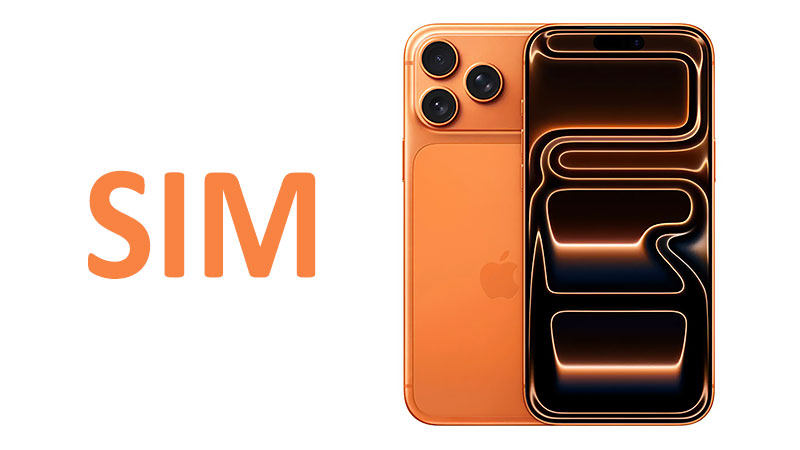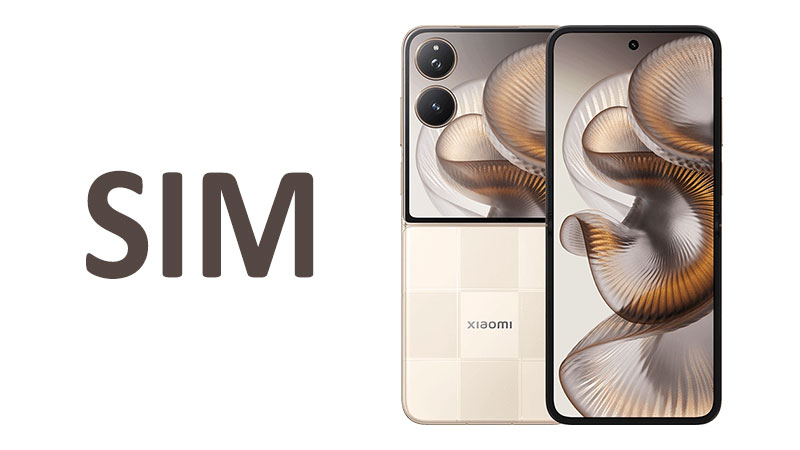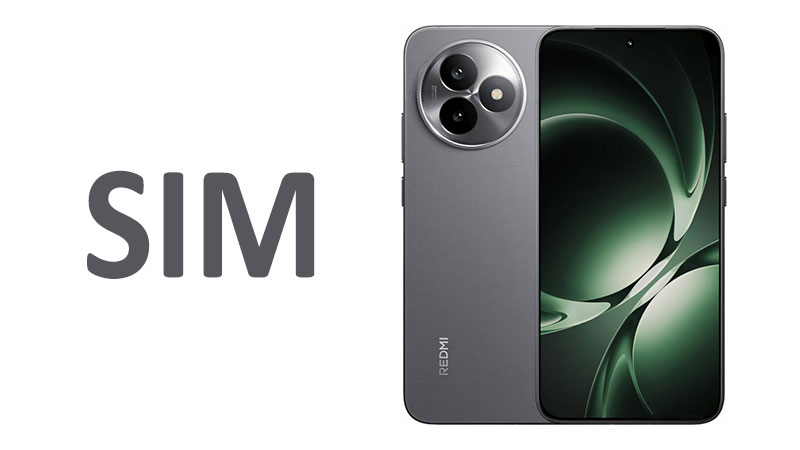The Apple iPhone 17 Pro Max SIM structure represents a major leap forward. It showcases a critical juncture in mobile device connectivity. This flagship model pushes digital convenience and network performance to new heights. Understanding the new eSIM and Dual-SIM dynamics is essential for buyers. Furthermore, the updated wireless and wired technologies offer powerful new capabilities. This comprehensive guide explores all aspects of the iPhone 17 Pro Max connectivity suite. It covers everything from global SIM configurations to cutting-edge Wi-Fi 7 integration.
The Global Shift to eSIM Technology
Apple champions the transition from physical SIM cards to eSIM technology. The iPhone 17 Pro Max accelerates this global shift significantly. An eSIM, or embedded SIM, is a digital chip inside the phone. It replaces the traditional plastic nano-SIM card entirely. This change offers many benefits to both users and manufacturers.
Removing the physical SIM tray is a design-driven decision. It frees up valuable internal space inside the chassis. Apple can use this space for larger components. The primary benefit is often a slightly larger battery capacity. This results in improved endurance, which is highly desirable for Pro Max users. The absence of a physical tray also improves dust and water resistance. The phone design becomes inherently more rugged.
Specialized Comparison: eSIM vs. Previous Generation
The previous iPhone 16 Pro Max maintained a hybrid approach in most regions. It offered both a physical nano-SIM slot and eSIM support internationally. The iPhone 17 Pro Max broadens the scope of its eSIM-only strategy. It shifts more international models toward the digital-only standard. This represents a calculated move towards universal digital activation.
Competitors in the Android space often offer physical dual nano-SIM trays globally. This gives users immediate, familiar flexibility. However, these competing models frequently lack the advanced eSIM management features of the iPhone. The iPhone 17 Pro Max allows users to store eight or more eSIM profiles. Users can easily switch between them without physically handling cards. This level of flexibility is crucial for frequent travelers and business users.
Pros and Cons of the eSIM-First Approach
The shift to eSIM brings considerable advantages to the user experience. Enhanced security is a key benefit of digital profiles. A thief cannot remove a physical SIM card from a lost or stolen phone. This prevents potential SIM-swap fraud attempts. Activation also becomes virtually instant. Users can activate their new phone plan digitally in minutes.
Conversely, some drawbacks still exist in certain markets. Not all smaller regional carriers globally support eSIM activation yet. Traveling to remote areas might sometimes require a physical SIM. Swapping phones quickly is also more complex with eSIMs. You cannot simply move a card between devices in seconds. The transfer process requires carrier support or Apple’s Quick Transfer feature. This takes more time than the simple physical swap.
The iPhone 17 Pro Max SIM Configuration Ecosystem
Apple designs the iPhone 17 Pro Max with three distinct SIM configurations. This segmented approach addresses varied market needs and carrier regulations worldwide. Understanding your specific model is important before purchase. The configuration determines whether you have a physical SIM tray at all.
USA Model: The Fully Digital Standard
In the United States, the iPhone 17 Pro Max is completely eSIM-only. It features no physical SIM card slot whatsoever. This model relies exclusively on digital SIM technology for cellular service. The user can store eight or more eSIM profiles on the device. Users can run a maximum of two lines actively at any given moment. This standard originated with the iPhone 14 series in the USA. It has now become the established norm for the US market.
The eSIM-only design maximizes internal space efficiency. It also pushes US carriers to fully embrace digital provision. Consumers benefit from streamlined activation and superior device security. This trend is unlikely to reverse course.
International Model: The Hybrid Flexibility
The globally available iPhone 17 Pro Max offers more traditional flexibility. It supports one physical Nano-SIM slot combined with eSIM functionality. Users can activate a maximum of two lines concurrently. This setup could be Nano-SIM plus one eSIM, or two active eSIMs simultaneously. It provides the best of both worlds for many consumers.
This international variant caters to regions with developing eSIM infrastructure. It is suitable for users who frequently swap physical cards. This might include travelers using local prepaid SIMs for data. It ensures backward compatibility while promoting digital adoption. Buyers outside the USA should verify their regional variant configuration carefully.
China Model: Dual Physical SIM
Mainland China retains a unique configuration due to local market demands. The iPhone 17 Pro Max sold in China supports Dual Nano-SIM cards exclusively. This means the phone has two physical SIM trays. It does not support the eSIM technology in this specific regional variant.
The Dual Nano-SIM setup is highly valued by Chinese business users. It allows them to separate work and personal lines easily. They can maintain service from two different mainland carriers simultaneously. This specialized hardware confirms Apple’s commitment to meeting distinct regional requirements. It highlights the varying global pace of SIM technology adoption.
Dual-SIM Power: Running Two Lines Simultaneously
The Dual-SIM capability of the iPhone 17 Pro Max is a major professional feature. It allows the device to manage two separate phone numbers concurrently. This functionality is supported across all regional models, though the technology varies. The International and USA models rely on the Dual eSIM system. The China model uses the Dual Nano-SIM system.
Dual-SIM provides practical benefits across diverse scenarios. Business professionals can manage their professional and personal communications on one phone. This eliminates the need to carry two separate handsets. The convenience and efficiency gains are substantial for many users.
Dual-SIM for Seamless International Travel
The Dual-SIM feature is particularly transformative for travelers. An international user can keep their home Nano-SIM or eSIM active for calls. Simultaneously, they can activate a local eSIM for data. This local eSIM provides cost-effective data rates in the foreign country. Users avoid expensive international roaming charges this way.
Switching between carriers or plans is managed digitally through the iOS settings. This eliminates the hassle of searching for local SIM vendors abroad. It also removes the risk of losing small physical cards. The ability to store eight or more eSIM profiles is a massive advantage here. Frequent global travelers can pre-load multiple regional plans.
Carrier Support and Management
Activation and use of Dual-SIM require carrier support. Both lines must be provisioned by network providers. iOS manages the two active lines intelligently. Users can designate one line as the primary for data and messages. The other line can be used exclusively for voice calls.
Users can assign labels to each line, such as “Work” and “Personal.” They can also choose which number to use for outgoing calls. The phone automatically defaults to the correct line based on contact history. This intuitive management system minimizes confusion and errors. This robust Dual-SIM functionality is a core strength of the iPhone 17 Pro Max experience.
Next-Generation Wireless Speeds: Wi-Fi 7
The Apple iPhone 17 Pro Max introduces support for the groundbreaking Wi-Fi 7 standard. This new standard, formally known as IEEE 802.11 be, offers monumental speed increases. It also drastically reduces latency compared to older generations. This represents a significant upgrade over the Wi-Fi 6 and Wi-Fi 6e standards.
Wi-Fi 7 leverages all three frequency bands: 2.4 GHz, 5 GHz, and the 6 GHz band. It incorporates advanced technologies like 320 MHz channel widths. It also features Multi-Link Operation, known as MLO. MLO allows the phone to transmit and receive data across multiple bands simultaneously. This dramatically improves throughput and reliability.
Specialized Comparison: Wi-Fi 7 vs. Wi-Fi 6e
Wi-Fi 6e, found in the previous generation, was already fast. It opened up the less-congested 6 GHz spectrum. However, Wi-Fi 7 can theoretically reach peak speeds exceeding 40 Gbps. This is a massive leap beyond the 9.6 Gbps limit of Wi-Fi 6. The difference is particularly noticeable in crowded environments.
Wi-Fi 7 also provides better efficiency and lower jitter. This makes the iPhone 17 Pro Max ideal for high-demand applications. These include 8K video streaming and cloud gaming services. Professional users who handle massive data files daily will see immediate benefits. The iPhone 17 Pro Max harnesses this speed for fast backups and cloud synchronization.
Bluetooth 6.0: Faster, More Efficient Connections
The iPhone 17 Pro Max also features the latest Bluetooth 6.0 specification. Bluetooth 6.0 brings improvements in speed, range, and power consumption. This enhancement is crucial for the Apple accessory ecosystem. It ensures seamless, high-fidelity connections.
Faster data transfer speeds improve audio quality with wireless headphones. They support higher bitrates for lossless audio transmission. Improved efficiency means connected accessories use less battery power. This extends the longevity of devices like AirPods and Apple Watch. Bluetooth 6.0 is essential for connecting to the Apple second-generation Ultra Wideband chip. This improves precision finding capabilities.
The Foundation of Cellular Service: 5G and Beyond
The cellular connectivity of the iPhone 17 Pro Max is robust and comprehensive. It supports a wide array of global standards. This ensures high-speed access virtually anywhere in the world. The supported technologies include GSM, CDMA, HSPA, EVDO, LTE, and 5G. This compatibility portfolio caters to both legacy and modern networks.
The primary focus remains on cutting-edge 5G connectivity. The device supports both Sub-6 GHz 5G and mmWave 5G bands. Sub-6 GHz provides broader coverage and better building penetration. mmWave delivers extremely high speeds over short distances. This is common in densely populated urban centers.
Enhanced 5G Performance and Coverage
Apple integrates an advanced modem solution in the iPhone 17 Pro Max. This modem maximizes signal reception and efficiency. Optimized antenna design enhances the 5G experience further. Users experience fewer dropped calls and more consistent speeds. Cellular reception is greatly enhanced compared to earlier iPhone models.
The phone supports multiple 5G frequency bands globally. This universal compatibility is vital for international roaming. Users can travel confidently, knowing their device will connect reliably. The 5G network provides the foundation for powerful mobile computing. It enables real-time collaboration and cloud processing capabilities.
Future-Proofing Network Access
The inclusion of multiple legacy technologies is strategic. It ensures network access even in rural or less developed regions. HSPA and LTE remain essential fallback networks. They guarantee voice and data services when 5G is unavailable. This layered approach ensures continuous connectivity.
The advanced modem also manages the transition between network types seamlessly. Users experience smoother handoffs between 5G and LTE. This minimizes interruptions during video calls or streaming. The robust cellular stack confirms the phone’s status as a premium global communications device.
Wired Connectivity: USB Type-C 3.2 Gen 2 Data Transfer
The iPhone 17 Pro Max significantly upgrades its wired interface. It features a USB Type-C 3.2 Gen 2 port. This adoption replaces proprietary charging standards. Crucially, it unlocks unprecedented data transfer speeds for an iPhone. The port serves multiple high-speed functions beyond just charging.
USB 3.2 Gen 2 supports a theoretical data transfer rate of 10 Gigabits per second (Gbps). This is a substantial leap in wired performance. For context, this speed allows massive files to transfer in seconds. Photographers and videographers benefit immensely from this capability. They can offload 4K or 8K ProRes video files extremely quickly.
Streamlining Professional Workflows
The 10 Gbps transfer speed fundamentally changes professional workflows. Users who record high-resolution video directly to external storage will see efficiency gains. Moving large libraries of photos and videos from the phone becomes effortless. This makes the iPhone 17 Pro Max a true tool for content creation.
Furthermore, the USB-C port supports DisplayPort output. This feature enables high-resolution video output to an external monitor or display. Users can connect the iPhone to a 4K or even 6K screen seamlessly. This is perfect for presentations, professional editing, or mobile gaming. The iPhone can effectively turn into a portable computing hub.
Pros and Cons of the USB-C 3.2 Upgrade
The speed increase is a clear advantage over older models. The USB-C standard provides universal compatibility with modern peripherals. This reduces cable clutter and simplifies connectivity for users. It brings the iPhone in line with professional computing standards.
However, users must ensure they use a compatible USB 3.2 Gen 2 certified cable. Older or standard charging cables will limit the speed to USB 2.0 rates. This is a common point of user confusion. The cable choice directly impacts the data transfer performance. Buyers should invest in the appropriate high-speed accessories to maximize the port’s potential.
Precision Location Services and Advanced GPS
Accurate positioning is vital for navigation, mapping, and location-based services. The iPhone 17 Pro Max boasts an extremely precise navigation system. It integrates support for multiple global satellite constellations. These include GPS, GLONASS, GALILEO, BDS, QZSS, and NavIC. This comprehensive support ensures global coverage.
A key technical feature is the inclusion of dual-frequency GPS. The device receives signals from both the L1 and L5 frequency bands. The L1 frequency is the standard legacy signal. The L5 band is a modernized signal used for enhanced precision.
The Benefits of Dual-Frequency GPS
Receiving signals from two frequencies significantly improves accuracy. It drastically reduces errors caused by interference. Urban canyons and dense foliage often block single-frequency signals. Dual-frequency reception helps mitigate these issues effectively. Location accuracy improves, especially in challenging environments.
For users of augmented reality (AR) applications, this precision is crucial. Navigation in complex areas, like city centers, becomes more reliable. The system also supports NavIC, India’s regional navigation system. This inclusion demonstrates Apple’s commitment to providing localized accuracy for major markets.
Other Essential Connectivity Elements
The iPhone 17 Pro Max retains full NFC capabilities. Near Field Communication enables contactless payments via Apple Pay. It also supports quick pairing with accessories and digital key functionalities. NFC remains an indispensable feature for modern mobile commerce.
Notably, the device does not include an integrated FM radio tuner. Apple has historically omitted this feature. Users must rely on internet-based streaming services for radio content. This is a standard design decision in the premium smartphone market.
Pros, Cons, and Key Buyer Takeaways
The connectivity features of the iPhone 17 Pro Max are generally positive. The move toward eSIM-only simplifies manufacturing and increases security. Wi-Fi 7 integration ensures future-proof, blazing-fast wireless speeds. The USB-C 3.2 Gen 2 port provides professional-grade wired data transfer performance.
A minor disadvantage is the fragmented SIM support across regions. The USA model’s lack of a physical SIM slot may inconvenience some international tourists. Furthermore, Wi-Fi 7 requires a compatible router to unlock its full potential. The benefits are limited by your home network infrastructure. Bluetooth 6.0 offers incremental, though valuable, improvements in efficiency and audio quality.
Important Points a Buyer Should Know
Potential buyers must confirm the SIM configuration of their purchase location. If you live in the USA, you will use eSIM exclusively. If you travel frequently with physical local SIMs, consider the International model. Chinese travelers often need the Dual Nano-SIM version sold there.
The advanced connectivity requires compatible accessories. Maximize data speed by using proper 10 Gbps USB-C cables. To utilize Wi-Fi 7, you must upgrade your home or office router. Do not expect peak performance using older network hardware. Overall, the connectivity suite is designed to support the next era of high-bandwidth applications.
Conclusion: Making an Informed Connectivity Choice
The Apple iPhone 17 Pro Max sets a new standard for mobile connectivity. It strategically embraces the future with widespread eSIM adoption. This approach enhances security and improves overall design efficiency. The Dual-SIM support, whether digital or physical, provides essential flexibility for users.
Furthermore, the inclusion of Wi-Fi 7 and USB Type-C 3.2 Gen 2 speeds up professional workflows. It ensures the phone can handle data demands for years to come. This connectivity package makes the iPhone 17 Pro Max a future-proof investment. Users seeking the fastest wireless and wired performance should consider this model. Understanding the regional SIM variations is the final step toward an informed decision. The connectivity features ultimately empower users with speed and global reach.
FAQ
Does the iPhone 17 Pro Max support two active phone numbers?
Yes, it supports Dual-SIM functionality globally. Users can have two lines active simultaneously.
Is the iPhone 17 Pro Max eSIM only in all countries?
No, only the USA model is eSIM-only. International models offer a Nano-SIM slot plus eSIM. China models feature Dual Nano-SIMs.
What is the maximum number of eSIM profiles I can store?
The iPhone 17 Pro Max can store eight or more eSIM profiles. You can switch between them easily.
Does the iPhone 17 Pro Max support the newest Wi-Fi standard?
Yes, it supports Wi-Fi 7 (802.11 be). This provides significantly faster speeds and lower latency than previous standards.
How fast is the USB Type-C port on the iPhone 17 Pro Max?
The USB Type-C port supports USB 3.2 Gen 2. This allows for data transfer speeds up to 10 Gbps.



